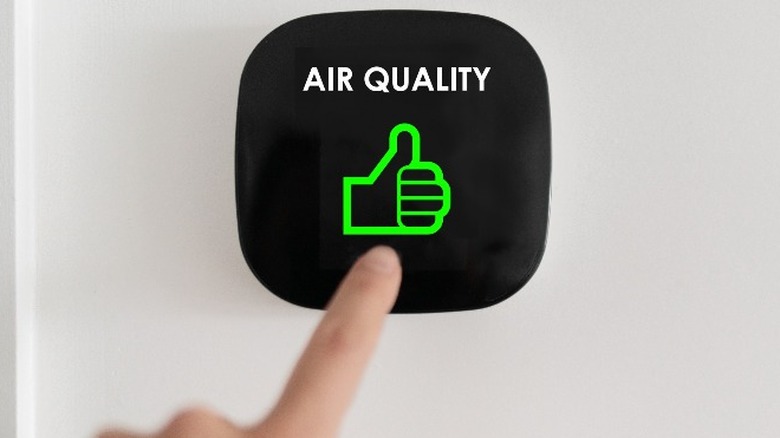Can Poor Indoor Air Quality In Buildings Make You Sick?
Depending on where you live, you might check the daily air quality index to stay informed on how clean the air is in your area. The United States air quality index (AQI) is the Environmental Protection Agency's metric for air quality and measurements of air pollution (via the U.S. Air Quality Index). The scale contains numeric values that range from 0-500, with a range of 0-50 indicating good quality air and 300 or above indicating hazardous conditions. The AQI helps protect people from exposure to certain pollutants, like particulate matter (PM), carbon monoxide, and sulfur dioxide.
On the other side of the coin lies indoor air quality. Indoor air quality relates to how indoor air impacts a person's comfort levels while indoors, as well as their health and ability to perform their job, per the U.S. Occupational Safety and Health Administration (OSHA). Factors like humidity, temperature, ventilation, and exposure to harmful substances like mold all affect indoor air quality. However, OSHA does not have a standard system for indicating indoor air quality. That's why it can be beneficial to know how a potential indoor environment could expose you to health hazards and make you sick. Here's everything you need to know about how some buildings can make you ill.
What is sick building syndrome?
If you have symptoms like chills, cough, fatigue, fever, dry throat, runny nose, or nausea, it might not be from a common cold. Sick building syndrome is a term used to describe a set of symptoms experienced as a result of time spent inside, typically in a building (via Healthline). While sick building syndrome can affect people differently, it is identifiable when the afflicted person(s) experience worsening symptoms at the sick building, and symptoms improve after leaving it. According to the Environmental Protection Agency (EPA), short-term issues range from irritated eyes, nose, and throat to headaches and fatigue. Over time, serious health issues like cancer and even some diseases related to the heart or respiratory system can develop.
While most causes are unknown, OSHA says that factors like contamination from polluted outdoor air, a lack of fresh indoor air, moisture damage from water, and even construction can contribute to indoor air quality issues. Sick building syndrome gives a whole new meaning to the term, "toxic workplace." Not only does the modern worker have to be weary of unhealthy relationships, stress, and low pay at work, but they also have to be mindful of potentially hazardous air quality. If you're concerned or worried about the status of indoor air quality at your workplace, WebMD recommends that you talk to your employer or request an indoor air quality inspection from the EPA or OSHA.


